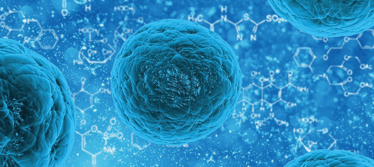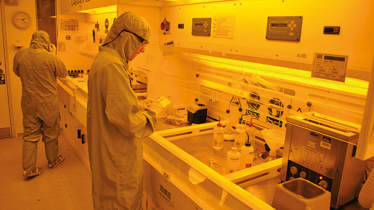Pushing Stem Cells from Promise to Product
Manufacturing stem cells for use in research is one thing; doing it on a commercial scale – with all the associated costs and scale-up issues – is an entirely different ballgame. Here, I look at the challenges ahead and the groups rising to meet them.
Neil Littman |

More and more stem cell therapies are entering clinical trials. The California Institute for Regenerative Medicine (CIRM) alone has over 90 development-stage programs and expects to have 10 investigational new drug (IND) applications filed by the end of 2014. As companies ponder how to safely deliver these therapies to patients in the most timely and cost-effective manner, process development and manufacturing challenges have been pushed firmly into the spotlight.
Cell manufacturing processes must comply with the current good manufacturing practice (cGMP) and chemistry, manufacturing and controls (CMC) standards of regulatory agencies to ensure that they are made in a safe and reproducible manner. It does not, however, imply that the process is sufficiently robust, scalable, and cost effective to achieve commercial viability. The key to developing sustainable and affordable stem cell therapies lies in allocating capital appropriately across clinical development, process development, manufacturing, and, importantly, in demonstrating safety and efficacy in the clinic.
Developing an effective stem cell therapy is only the beginning. It is vital that we consider the practicalities of regenerative medicine; there are many challenges that stem cell therapies need to overcome in order to become a viable and successful commercial product. What if a stem cell therapy was developed that could treat a condition affecting millions, such as diabetes? How would we go about producing, storing and transporting that volume of cells? If we want to see stem cell therapies move into the clinic, it is vital that manufacturing know-how does not lag behind research and development (R&D).
The product is the process
The manufacturing process for a cell product is directly linked to its safety and efficacy, so knowledge of the process is key to developing a fully characterized and understood product. For this reason, a seamless connection between R&D and manufacturing is essential – much more so than in small molecule or even biologics manufacturing. As any change to the manufacturing process can affect the cell product, scale up and cost-effectiveness should be considered early during clinical development. The most expensive part of manufacturing is usually working out the problematic elements that need to be removed or modified as the technology is scaled up. Spotting these early on will save you time and resources.
Stem Cell Trials to Watch
Type I Diabetes (ViaCyte)
San Diego-based biotech company ViaCyte recently initiated a combined Phase I/II clinical trial of their VC-01 cell therapy. ViaCyte use embryonic stem cells to create pancreatic progenitor cells. The cells are encapsulated in a semi-permeable device, which lets nutrients in, but stops the cells being attacked by the patient’s immune system. Safe inside the device, which sits just below the skin, the progenitor cells mature into insulin-producing cells, potentially eliminating the need for daily insulin injections. The treatment could provide what the company calls a “virtual cure for Type 1 diabetes”.
Ischemic stroke (ReNeuron)
ReNeuron’s treatment involves injection of neural stem cells, ReN001, into the brains of patients left disabled by ischemic stroke. The Phase I PISCES trial, the first clinical stem cell trial in the UK, showed no significant adverse effects, and the company reported “sustained reductions in neurological impairment and spasticity” in the eleven patients treated. Now, a larger Phase II trial is underway, recruiting 41 patients from ten UK centers. Patients in the Phase I trial were treated over six months after their stroke, whereas these patients will be treated 8-12 weeks post- stroke – the company hope that faster treatment will enhance efficacy.
Age-related macular degeneration (London Project to Cure Blindness)
There is a great deal of focus on ophthalmologic applications for stem cell therapies – the eye is immune privileged, easy to access, and even a small improvement in function could have a huge impact on the patient’s life. A therapy developed by researchers at a number of UK institutions, in collaboration with Pfizer, to treat age-related macular degeneration (AMD) will begin clinical trials soon. AMD is caused by damage to the cells supporting the retina. The project will generate replacement cells from human embryonic stem cells and transplant them underneath the retina.
Ideally, companies need to start thinking about these issues from the earliest preclinical work. Many cell lines being used by biotech companies to generate cell therapy products were originally derived for research purposes – they may lack proper cGMP compliance or donor eligibility (medical histories and consent). At a minimum, these cell lines will require extensive testing before regulators will allow their use in clinical trials. Another problem that can crop up when moving from animal to human studies is the use of cell medium containing animal-derived products, such as fetal bovine serum. This is common practice in research labs, but in a clinical setting carries the risk of lot-to-lot variability and even transmission of zoonotic diseases. Again, potentially costly and time-consuming bridging studies will be required to ensure that changes in the manufacturing process do not alter the final product. If a process is deemed efficient and scalable early on, these studies will not be required, saving both time and money down the road.
A thorough knowledge of the process, and therefore the product, will lead to a better characterized product that can be finely tuned and adjusted as needed. Developing potency and validation assays is critical in understanding the final cell product. Again, seamless integration of R&D and manufacture is crucial. For example, research on mechanisms of action during the preclinical phase should help identify potential potency assays, which can be refined and perfected throughout the development process and qualified in early-stage clinical trials. A clear measure of the therapeutic potency allows estimates to be made of the volume of cells you will need to manufacture – and allows you to design your process with scale up in mind.
For example, a few skilled lab technicians working in a clean room with adherent cell culture (T flasks) may be adequate to generate cells for tens or even hundreds of patients in a clinical trial – but what happens when we want to treat many thousands? It is unlikely that increasing the number of cleanrooms will be a viable option – apart from the cost, the area needed for adherent culture would quickly cover footballs fields and, regardless of standard operating procedures, slight differences between technicians could lead to unacceptable lot-to-lot variability.
Understanding the critical unit processes in the manufacture of cell therapies in a stepwise manner allows the process to be reduced to a set of steps with well-defined characteristics that can be reproduced at a large scale – the ultimate goal. However, this is all easier said than done!

A helping hand
The good news is that help is available. In the UK, for example, there is the Cell Therapy Catapult, which was established in 2012 to boost innovation and to help to build a leading stem cell therapy industry in the country. The organization maintains laboratories and staff to help companies – both in the UK and worldwide – to improve, standardize, and scale up their cell manufacturing processes. The overall aim is to make cell therapies more financially viable and to ‘de-risk’ the technology to make it more attractive to potential collaborators. To address Phase III and commercial manufacturing requirements, the Cell Therapy Catapult will manage a new UK Cell Therapy Manufacturing Center, which is receiving $93 million in funding from the UK government, in addition to the existing $116 million of government funding already awarded.
Various organizations are also attempting to help the industry by establishing standards and best practices for the development of cell therapies. For example, the Alliance for Regenerative Medicine (ARM) is aiming to create a public/private collaboration with partners such as the National Institute for Standards and Technology (NIST), the International Society for Stem Cell Research (ISSCR), the International Society for Cell Therapy (ISCT), and others for the benefit of the cell therapy industry as a whole.
Opportunities for New Technology
A recent CIRM-sponsored roundtable identified eight key manufacturing-related areas to speed up commercialization of stem cells:
- Expanding pluripotent and differentiated cells to large numbers (> 1012) in suspension culture.
- Making culture conditions more hospitable to cells through research on the biology of the cell microenvironment, including ‘smarter’ bioreactors with better in-process control and feedback loops.
- Methods for enclosed volume reduction without centrifugation.
- Improving yield during cell isolation.
- Small molecules to replace growth factors and cytokines.
- Synthetic matrices to replace biological ones.
- Methods to provide cells in final formulation media.
- Better control over the purity and identity of the product, and increased understanding of the effects of variation.
For further information, see www.cirm.ca.gov
In the US, CIRM is dedicated to accelerating the delivery of stem cell therapies to patients, but one of our challenges is in ensuring that we strike the right balance between early-stage manufacturing and process development challenges while driving product candidates towards clinical proof-of-concept. Any avenue that helps therapies achieve faster clinical success – and that means sustainable and affordable cell therapies for patients – is most welcome.
As the technology in the nascent field of cell therapy and regenerative medicine matures and more products enter late stage clinical development, advances in manufacturing and process development will be essential for timely and cost efficient delivery. An analogy can be drawn to the manufacture of monoclonal antibodies, which were first introduced in 1986. Initially, the industry was plagued by low titers and high production costs, but as the market demand grew, companies increasingly poured resources into large-scale manufacturing and process development. The result was the creation of more robust processes that yielded higher expression levels and cell densities, dramatically reducing the costs of production. In my view, this is where the field of cell therapy must ultimately head.
Business Development Officer at the California Institute for Regenerative Medicine, San Francisco Bay Area, CA, USA.



















